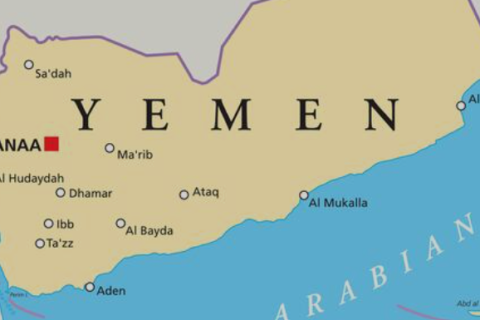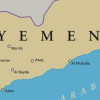Class three (3) of the nice classification of goods and services for classifying trademarks mainly includes cosmetics, non-medicated toiletry and/or cleaning preparations, for use in the home or in other environments. in terms of cosmetics and non-medicated toiletries, some examples are wet wipes with lotions, or fragrance. Cleaning preparations include non-medical soaps bleaches, and other cleaning and polishing and scouring products including sandpaper.
As a female who loves both make-up and perfumes, this is my favorite class, in addition to class 3 I also like class 44 which is related, but it is spa services, who does their own nails nowadays? I just go to the salon get Mani and Pedi services. while the polish products fall under class 3 the service of applying it falls under class 44.
The top ten applicants who file trademarks on class 3 internationally are;
1. L’OREAL
2. THE PROCTER & GAMBLE COMPANY
3. LG household and healthcare
4. Henkel AG
5. Amorpacific corporation
6. Unilever
7. Colgate Palmolive
8. Johnson and Johnson
9. Avon
10. Beiersdorf AG
Some famous brands from the region protected on class 3 include; HUDA BEAUTY (cosmetics), Rasasi (perfumes and fragrances personal or for rooms), Gento )laundry detergent and fabric softener manufactured by SIDCO. Hair care preparations Elsada. Organic or traditional detergents and soaps such as the Alwazir brand are also covered within class 3.
While class 3 does include cleaning preparations, industrial preparations for cleaning are mainly in class 1 such as – chemical preparations for cleaning chimneys and degreasing preparations used in manufacturing processes (Class 1 – Chemicals). Class 3 does not include any cleaning appliances or equipment, these are mainly covered using classes 7 and class 21. To make matters even more confusing cleaning specific products such as brushes for cleaning body cavities (Class 10), paper wipes for cleaning (Class 16) and cleaning brushes for firearms (Class 13) are all cleaning appliances.
Class 3 of the nice classification for trademarks also covers fragrances and deodorants for human beings or for animals. Other type of deodorizers such as those used for clothes and for household are included on class 5. apparatuses to deodorize or services relating to fragrances are not included on class 5.
When thinking of the Class 3 trademark classification, one should keep in mind that the class has multiple overlapping products with goods from class 5, 21, 35, 42 and 44. Therefore these classes are said to be coordinated classes with the highest risk of potential confusion. To ensure you are choosing the right class for your trademark, before you protect under class 3 make sure to rule out all the coordinated classes –
– Class 5 – Pharmaceuticals, medical and veterinary preparations; sanitary preparations for medical purposes; dietetic food and substances adapted for medical or veterinary use, food for babies; dietary supplements for human beings and animals; plasters, materials for dressings; material for stopping teeth, dental wax; disinfectants; preparations for destroying vermin; fungicides, herbicides.
– Class 21 – Household or kitchen utensils and containers; cookware and tableware, except forks, knives and spoons; combs and sponges; brushes, except paintbrushes; brush-making materials; articles for cleaning purposes; unworked or semi-worked glass, except building glass; glassware, porcelain and earthenware.
– Class 35 – Advertising; business management; business administration; office functions.
– Class 42 – Scientific and technological services and research and design relating thereto; industrial analysis, industrial research and industrial design services; quality control and authentication services; design and development of computer hardware and software.
– Class 44 – Medical services; veterinary services; hygienic and beauty care for human beings or animals; agriculture, aquaculture, horticulture and forestry services.
Explaining some of the more recent changes in the nice classification relating to goods on class 3
– Under the 11th edition of the Nice Classification, cosmetics, toiletry preparations, and soap are classified in Class 3, except when those goods are medicated, are for pharmaceutical purposes, or have antibacterial or disinfectant properties. In such cases, the goods are classified in Class 5. “Medicated soap” and “disinfectant soap” were transferred from Class 3 to Class 5 in the 11th edition of the nice classification. “Antibacterial soap,” “medicated toiletry preparations,” and “medicated shampoos” were added to the List in Class 5. Therefore, if an identification for soaps does not specify that the soaps are antibacterial, disinfectant, or medicated, the soaps are generally classified in Class 3, however to avoid an office action and an action claiming vagueness, it is best to specify the type of soap covered. Similarly, if an identification for cosmetics or toiletry preparations does not specify that the cosmetics or toiletry preparations are medicated or for pharmaceutical purposes, it is generally presumed that the goods are non-medicated and classified in Class 3.
Hierarchy of good on class 3;
The EUIPO in collaboration with WIPO have developed a hierarchy of goods and services within a class to link the different products and to make the classification process easier. The hierarchy does not have any legal effect in trade mark examination or in the comparison of goods and services, it was only created as an assistive tool.
Class 3 of the Nice classification is divided into the below sub-sections:
I. Toiletries;
a. Oral hygiene preparations
b. Perfumery and fragrances
c. Body cleaning and beauty care preparations
i. Make-up
ii. Soaps and gels
iii. Bath preparations
iv. Deodorants and antiperspirants
v. Skin, Eye and nail care preparations
vi. Hair preparations and treatment
vii. hair removal and shaving preparations
II. Animal Grooming preparations
III. Essential oils and aromatic extracts
IV. Cleaning and fragrance preparations
a. Household fragrances
b. Vehicle cleaning preparations
c. ;laundry preparations
d. leather and shoe cleaning
V. Abrasives
VI. Tailors and cobblers wax
Toiletries;
Oral hygiene preparations
Perfumery and fragrances
Body cleaning and beauty care preparations
Make-up infographic
Soaps and gels
Bath preparations
Deodorants and antiperspirants
Skin, Eye and nail care preparations
Hair preparations and treatment
hair removal and shaving preparations
Animal Grooming preparations
Essential oils and aromatic extracts
Cleaning and fragrancing preparations
Household fragrances
Vehicle cleaning preparations
laundry preparations
leather and shoe cleaning
Abrasives
Tailors and cobblers wax
Deciphering Class 3 of Nice classification for trademarks:
Class three (3) of the nice classification of goods and services for classifying trademarks mainly includes cosmetics, non-medicated toiletry and/or cleaning preparations, for use in the home or in other environments. in terms of cosmetics and non-medicated toiletries, some examples are wet wipes with lotions, or fragrance. Cleaning preparations include non-medical soaps bleaches, and other cleaning and polishing and scouring products including sandpaper.
As a female who loves both make-up and perfumes, this is my favorite class, in addition to class 3 I also like class 44 which is related, but it is spa services, who does their own nails nowadays? I just go to the salon get Mani and Pedi services. while the polish products fall under class 3 the service of applying it falls under class 44.
The top ten applicants who file trademarks on class 3 internationally are;
- L’OREAL
- THE PROCTER & GAMBLE COMPANY
- LG household and healthcare
- Henkel AG
- Amorpacific corporation
- Unilever
- Colgate Palmolive
- Johnson and Johnson
- Avon
- Beiersdorf AG
Some famous brands from the region protected on class 3 include; HUDA BEAUTY (cosmetics), Rasasi (perfumes and fragrances personal or for rooms), Gento )laundry detergent and fabric softener manufactured by SIDCO. Hair care preparations Elsada. Organic or traditional detergents and soaps such as the Alwazir brand are also covered within class 3.
While class 3 does include cleaning preparations, industrial preparations for cleaning are mainly in class 1 such as – chemical preparations for cleaning chimneys and degreasing preparations used in manufacturing processes (Class 1 – Chemicals). Class 3 does not include any cleaning appliances or equipment, these are mainly covered using classes 7 and class 21. To make matters even more confusing cleaning specific products such as brushes for cleaning body cavities (Class 10), paper wipes for cleaning (Class 16) and cleaning brushes for firearms (Class 13) are all cleaning appliances.
Class 3 of the nice classification for trademarks also covers fragrances and deodorants for human beings or for animals. Other type of deodorizers such as those used for clothes and for household are included on class 5. apparatuses to deodorize or services relating to fragrances are not included on class 5.
When thinking of the Class 3 trademark classification, one should keep in mind that the class has multiple overlapping products with goods from class 5, 21, 35, 42 and 44. Therefore these classes are said to be coordinated classes with the highest risk of potential confusion. To ensure you are choosing the right class for your trademark, before you protect under class 3 make sure to rule out all the coordinated classes –
- Class 5 – Pharmaceuticals, medical and veterinary preparations; sanitary preparations for medical purposes; dietetic food and substances adapted for medical or veterinary use, food for babies; dietary supplements for human beings and animals; plasters, materials for dressings; material for stopping teeth, dental wax; disinfectants; preparations for destroying vermin; fungicides, herbicides.
- Class 21 – Household or kitchen utensils and containers; cookware and tableware, except forks, knives and spoons; combs and sponges; brushes, except paintbrushes; brush-making materials; articles for cleaning purposes; unworked or semi-worked glass, except building glass; glassware, porcelain and earthenware.
- Class 35 – Advertising; business management; business administration; office functions.
- Class 42 – Scientific and technological services and research and design relating thereto; industrial analysis, industrial research and industrial design services; quality control and authentication services; design and development of computer hardware and software.
- Class 44 – Medical services; veterinary services; hygienic and beauty care for human beings or animals; agriculture, aquaculture, horticulture and forestry services.
Explaining some of the more recent changes in the nice classification relating to goods on class 3
- Under the 11th edition of the Nice Classification, cosmetics, toiletry preparations, and soap are classified in Class 3, except when those goods are medicated, are for pharmaceutical purposes, or have antibacterial or disinfectant properties. In such cases, the goods are classified in Class 5. “Medicated soap” and “disinfectant soap” were transferred from Class 3 to Class 5 in the 11th edition of the nice classification. “Antibacterial soap,” “medicated toiletry preparations,” and “medicated shampoos” were added to the List in Class 5. Therefore, if an identification for soaps does not specify that the soaps are antibacterial, disinfectant, or medicated, the soaps are generally classified in Class 3, however to avoid an office action and an action claiming vagueness, it is best to specify the type of soap covered. Similarly, if an identification for cosmetics or toiletry preparations does not specify that the cosmetics or toiletry preparations are medicated or for pharmaceutical purposes, it is generally presumed that the goods are non-medicated and classified in Class 3.
Hierarchy of good on class 3;
The EUIPO in collaboration with WIPO have developed a hierarchy of goods and services within a class to link the different products and to make the classification process easier. The hierarchy does not have any legal effect in trade mark examination or in the comparison of goods and services, it was only created as an assistive tool.
Class 3 of the Nice classification is divided into the below sub-sections:
- Toiletries;
- Oral hygiene preparations
- Perfumery and fragrances
- Body cleaning and beauty care preparations
- Make-up
- Soaps and gels
- Bath preparations
- Deodorants and antiperspirants
- Skin, Eye and nail care preparations
- Hair preparations and treatment
- hair removal and shaving preparations
- Animal Grooming preparations
- Essential oils and aromatic extracts
- Cleaning and fragrance preparations
- Household fragrances
- Vehicle cleaning preparations
- ;laundry preparations
- leather and shoe cleaning
- Abrasives
- Tailors and cobblers wax
| Toiletries; | ||
| Oral hygiene preparations |  |
 |
| Perfumery and fragrances | 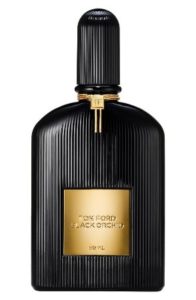 |
  |
| Body cleaning and beauty care preparations | 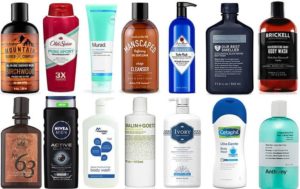 |
|
| Make-up | infographic | |
| Soaps and gels |  |
|
| Bath preparations | ||
| Deodorants and antiperspirants | 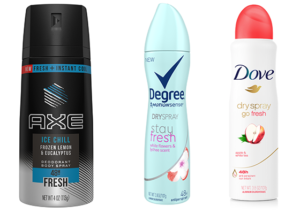 |
|
| Skin, Eye and nail care preparations |  |
|
| Hair preparations and treatment |  |
|
| hair removal and shaving preparations |  |
|
| Animal Grooming preparations |  |
|
| Essential oils and aromatic extracts |  |
|
| Cleaning and fragrancing preparations |  |
|
| Household fragrances | 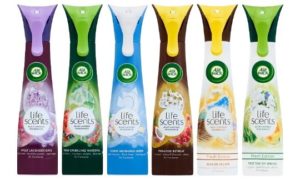 |
|
| Vehicle cleaning preparations | 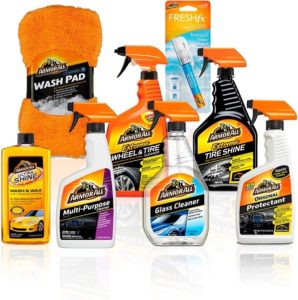 |
|
| laundry preparations | 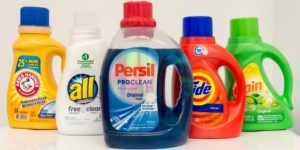 |
|
| leather and shoe cleaning | 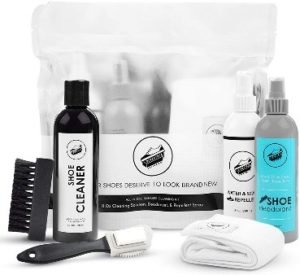 |
|
| Abrasives |  |
|
| Tailors and cobblers wax |  |
|





